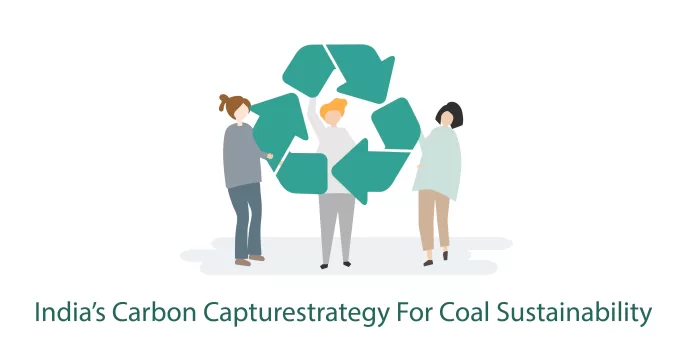A Bold Move Amidst Global Challenges
In a strategic move to balance energy demands and environmental responsibilities, India is gearing up to unveil a carbon capture policy later this year. Rajnath Ram, energy adviser at Niti Aayog, highlights the pivotal role this policy will play in sustaining the country’s vast coal resources, responsible for 42% of India’s total emissions.
Power Sector’s Carbon Conundrum
India’s power sector emits a significant share of the nation’s carbon footprint. With a visionary approach, the government aims to capture and recycle a substantial 70% of these emissions through carbon capture initiatives. This ambitious target forms the core of India’s strategy to continue utilizing its abundant coal reserves in an environmentally sustainable manner.
A Game-Changer in the Energy Landscape
As the world races towards renewable energy, India recognizes that aggressive renewable deployment alone cannot meet the surging energy demands. To prevent blackouts and maintain energy reliability, the government argues that an equivalent thermal capacity must be added. Carbon capture emerges as a pragmatic solution to strike a balance between environmental responsibility and energy security.
Incentives and Investments
To encourage companies to adopt carbon capture, the policy will include incentives for trapping, recycling, and potentially storing emissions underground. India is committing a substantial 85 billion rupees ($1 billion) in subsidies for coal gasification projects, aligning with the nation’s quest for sustainable energy solutions. This early-stage technology converts coal into gas for electricity generation, resulting in marginally lower emissions compared to conventional methods.
Global Context and Challenges Ahead
While India takes a pioneering step towards carbon capture, the global landscape reveals challenges. The International Energy Agency points out the slow pace of Carbon Capture and Storage (CCS) units entering operation globally. Currently, around 40 units are online, with an additional 50 expected by 2030. This raises concerns about meeting carbon neutrality targets by mid-century.
Conclusion
India’s venture into carbon capture and coal sustainability showcases a pragmatic approach to meet energy demands without compromising environmental commitments. The success of this policy could set a benchmark for other nations grappling with similar challenges, emphasizing the importance of balancing economic growth with environmental stewardship.


